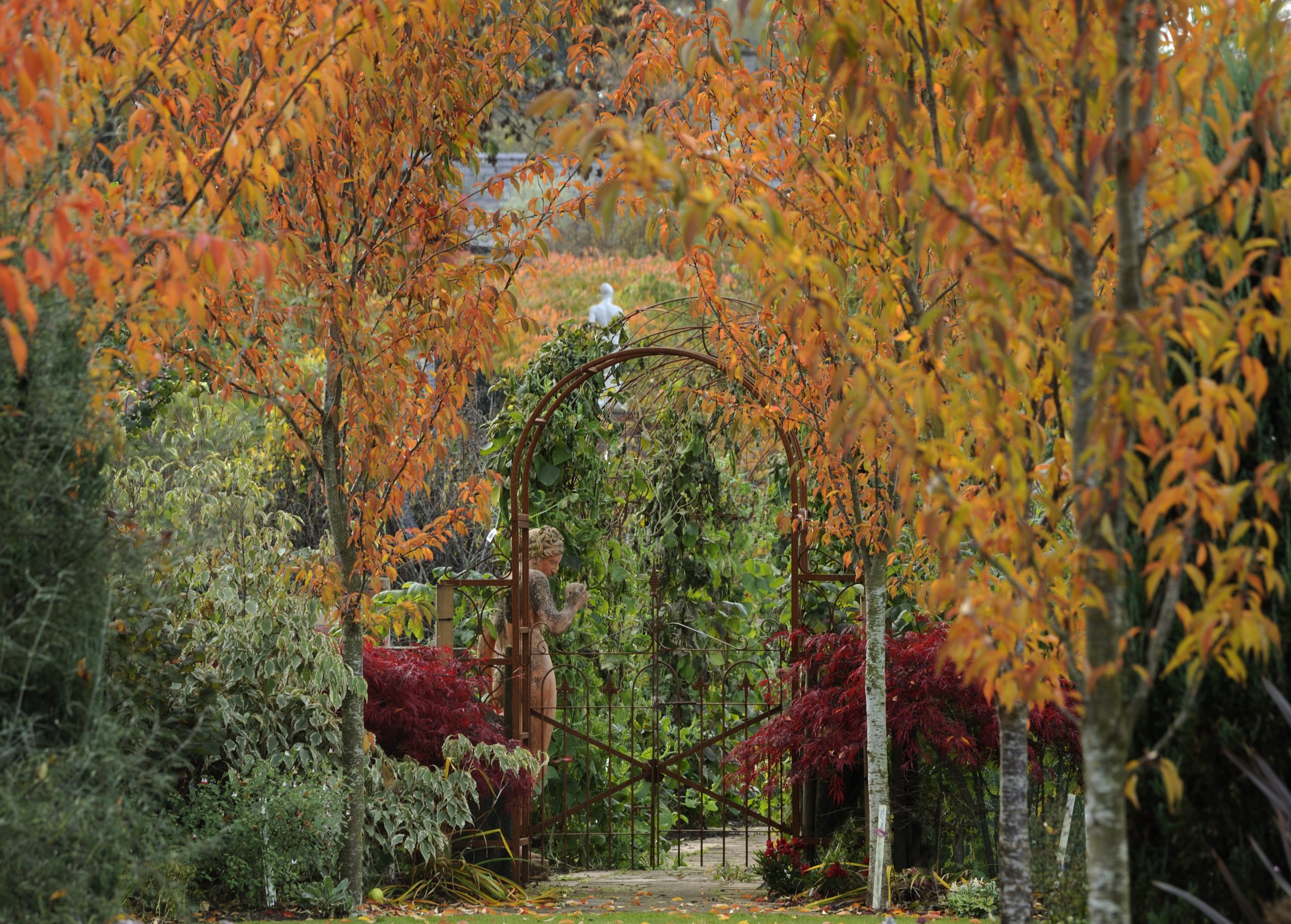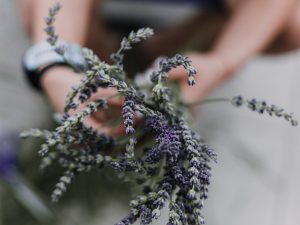October in the garden: Lift vegetables, repair and get tidying

The colder weather is rolling in and it’s time to prepare for winter. Here are some tips for October in the garden.
Path repairs
Autumn is a good time to carry out repairs to paths, or to lay new ones. If you are doing anything that needs mortar, make sure it is completed before the frosty weather appears, as frost will damage the mortar if it isn’t fully set.
Climbing roses
Climbing roses don’t need regular annual pruning like shrub roses, but this is a good time of year to combine checking that their ties are firm for the winter, (but not too tight as the branches will have expanded) and cutting out any dead wood or trimming off stems to maintain your plant’s shape. Of course, this is also a good time of year to plant new climbing roses – the single yellow-flowered ‘Mermaid’ is one of my favourites.
Rooted cuttings
Remember that many cuttings that you have in the greenhouse that have now rooted, especially evergreen shrubs, should be left dormant during the winter. Do not encourage them to grow by potting them on – leave this till next spring.
Make a mini cloche
Cloches are especially useful at this time of the year, (and again in the spring) because by keeping the soil warm and providing protection, they extend your growing season by many weeks. It is very easy to make your own, to cover either part of a bed or border, or even a container.
Plant trees
Young trees sold in container pots can, in theory, be planted throughout the year. However, there is no doubt that now, the autumn, is the best time to plant them, as they can get their roots settled and established through the winter. If you buy bare-rooted trees, then they should be planted while they are dormant – between now and March.
 Lift vegetables
Lift vegetables
This is the time that those vegetables that you have been growing all summer, beetroot and carrots for instance, are about to reward you. However, they can be ruined by being left in wet ground, so they need to be dug up or lifted, and stored. They are ideally stored in a cool dark shed in a box of dry potting compost.
Keep leaves off plants
If you have cut down herbaceous perennials in your borders to make your garden neat and tidy for the winter, you need to make sure you keep fallen leaves from lying on the exposed crowns of plants, because this will cause them to rot, especially in a damp autumn.
Cover your pond
Autumn weather has started, and soon the leaves will be falling fast. If you have a pond, you won’t want loads of them decomposing in the water, especially if you have fish, so try and keep it clean. The simplest way is to cover the pond with mesh or netting.
Mark perennials
If you have cut perennials down it is worth marking them with a peg or label in the ground, so that you don’t disturb or damage them when you’re digging the soil around them or forking in a winter mulch.
Get tidying
This is the time of year when a small amount of work with the right tools can bring you spectacular and satisfying results in the garden. For instance, that branch that needs trimming off a tree, another piece of timber that needs sawing up into logs…and it’s only a few weeks to Guy Fawkes Night.
Winter bedding
Is your garden beginning to look a bit sad? Then brighten it up with some winter bedding. It’s ideal for tubs, containers and window boxes, and a variety of plants, from pansies to heathers and small bulbs, will keep you going right through to next spring.
 Trim lavender
Trim lavender
This is the ideal time to tidy up lavender hedges and bushes with a trim. Cut off just the dead flowering stems – either with secateurs or, for a quicker job, with hand shears. Don’t cut any more of the stems with leaves, as they will be susceptible to frost – leave this to the spring instead. You can complete the job by hanging the cut stems up to dry, and then rubbing out the dead flowerheads to produce scented lavender bags.
Young evergreens
Young evergreens can be vulnerable to both sharp frost and winter winds because their new growth has not had time to harden off properly, so it is worth protecting them with some netting. Ideally you can put it round the small tree so that it does not touch the leaves.
Prune soft fruit
This is the time of year to prune the bushes of gooseberries, currants and raspberries, once all the leaves are off. Raspberry canes should be cut to the ground, while for the others you should aim to thin the shoots to remove old ones, allowing plenty of light into the plant and retaining a good ‘goblet-like’ shape.
 Avoid waterlogging
Avoid waterlogging
When there is torrential autumn rain there is only so much you can do, but there are a few basics that will help avoid waterlogging. It is worth going over your lawn with a fork, digging in the tines to make a series of holes. If you notice a particular point where water is building up or being channelled onto a bed or border, it is worth creating your own ‘drainage’ to divert the water to somewhere it won’t do any damage.
Protect fuchsias
With a few exceptions, fuchsias are not hardy in the UK and will be killed by frost, but they are also very easy to keep, and it’s worth the effort to achieve mature plants. Plants in pots can just be moved into a frost-free place like a greenhouse or a windowsill with plenty of light, while those in the ground should be dug up and put into pots. Trim off old foliage and make sure the soil remains relatively dry through the winter.
Dig heavy soils
Remember if you have heavy clay soil that needs digging you need to get it done now. Even if the winter rainfall is only average there will come a time when you simply can’t dig it because of the moisture retention, and if there is more rain than usual this can last for many weeks and keep you off the ground until well into the spring.
Lead image: Val Corbett / Larch Cottage Nurseries


















